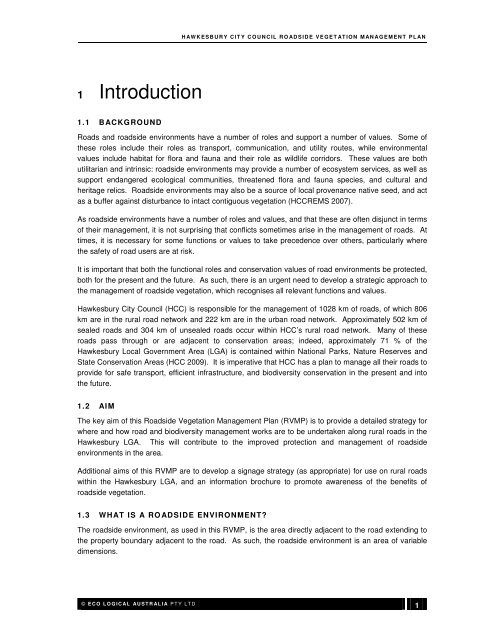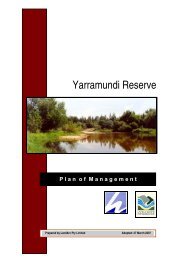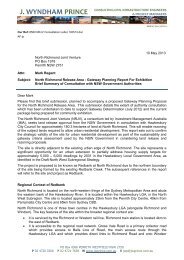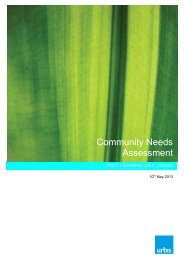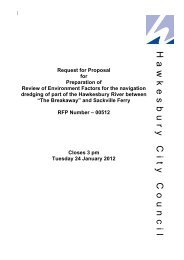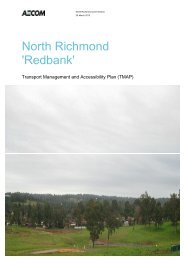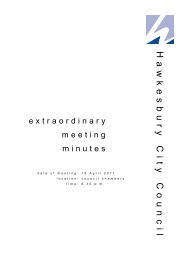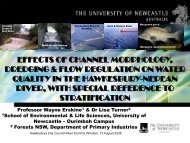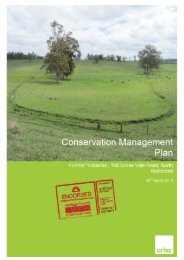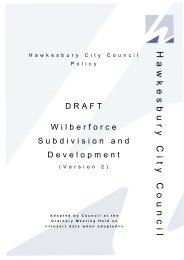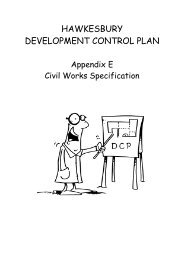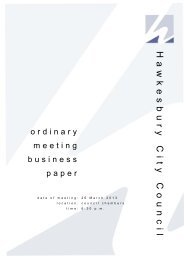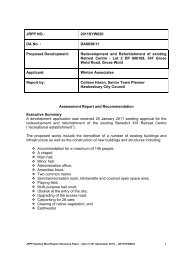Attachment 1 to Item 53 - Roadside Vegetation Management Plan
Attachment 1 to Item 53 - Roadside Vegetation Management Plan
Attachment 1 to Item 53 - Roadside Vegetation Management Plan
Create successful ePaper yourself
Turn your PDF publications into a flip-book with our unique Google optimized e-Paper software.
H AW K E S B U R Y C IT Y C O U N C IL R O AD S ID E V E GE T AT ION M AN AG E M E N T P L AN<br />
1 Introduction<br />
1.1 BACKGROUND<br />
Roads and roadside environments have a number of roles and support a number of values. Some of<br />
these roles include their roles as transport, communication, and utility routes, while environmental<br />
values include habitat for flora and fauna and their role as wildlife corridors. These values are both<br />
utilitarian and intrinsic: roadside environments may provide a number of ecosystem services, as well as<br />
support endangered ecological communities, threatened flora and fauna species, and cultural and<br />
heritage relics. <strong>Roadside</strong> environments may also be a source of local provenance native seed, and act<br />
as a buffer against disturbance <strong>to</strong> intact contiguous vegetation (HCCREMS 2007).<br />
As roadside environments have a number of roles and values, and that these are often disjunct in terms<br />
of their management, it is not surprising that conflicts sometimes arise in the management of roads. At<br />
times, it is necessary for some functions or values <strong>to</strong> take precedence over others, particularly where<br />
the safety of road users are at risk.<br />
It is important that both the functional roles and conservation values of road environments be protected,<br />
both for the present and the future. As such, there is an urgent need <strong>to</strong> develop a strategic approach <strong>to</strong><br />
the management of roadside vegetation, which recognises all relevant functions and values.<br />
Hawkesbury City Council (HCC) is responsible for the management of 1028 km of roads, of which 806<br />
km are in the rural road network and 222 km are in the urban road network. Approximately 502 km of<br />
sealed roads and 304 km of unsealed roads occur within HCC’s rural road network. Many of these<br />
roads pass through or are adjacent <strong>to</strong> conservation areas; indeed, approximately 71 % of the<br />
Hawkesbury Local Government Area (LGA) is contained within National Parks, Nature Reserves and<br />
State Conservation Areas (HCC 2009). It is imperative that HCC has a plan <strong>to</strong> manage all their roads <strong>to</strong><br />
provide for safe transport, efficient infrastructure, and biodiversity conservation in the present and in<strong>to</strong><br />
the future.<br />
1.2 AIM<br />
The key aim of this <strong>Roadside</strong> <strong>Vegetation</strong> <strong>Management</strong> <strong>Plan</strong> (RVMP) is <strong>to</strong> provide a detailed strategy for<br />
where and how road and biodiversity management works are <strong>to</strong> be undertaken along rural roads in the<br />
Hawkesbury LGA. This will contribute <strong>to</strong> the improved protection and management of roadside<br />
environments in the area.<br />
Additional aims of this RVMP are <strong>to</strong> develop a signage strategy (as appropriate) for use on rural roads<br />
within the Hawkesbury LGA, and an information brochure <strong>to</strong> promote awareness of the benefits of<br />
roadside vegetation.<br />
1.3 WHAT IS A RO ADSIDE ENVIRONMENT?<br />
The roadside environment, as used in this RVMP, is the area directly adjacent <strong>to</strong> the road extending <strong>to</strong><br />
the property boundary adjacent <strong>to</strong> the road. As such, the roadside environment is an area of variable<br />
dimensions.<br />
© E C O L O G IC A L AU S T R AL I A P T Y LT D<br />
1


